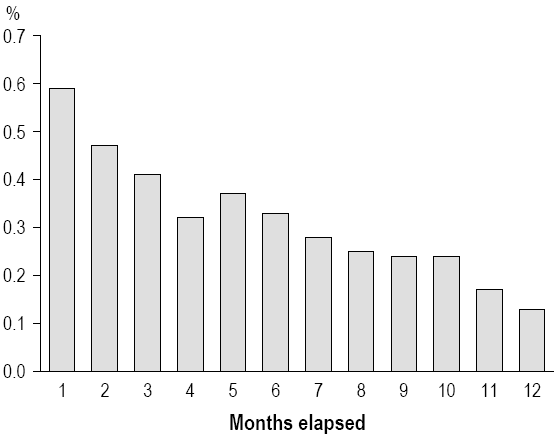Common menu bar links
Limitations
Archived Content
Information identified as archived is provided for reference, research or recordkeeping purposes. It is not subject to the Government of Canada Web Standards and has not been altered or updated since it was archived. Please "contact us" to request a format other than those available.
Although the Canadian Community Health Survey (CCHS) asked respondents how many activity-limiting injuries they had sustained during the past year, they were asked to provide details only about "the most serious injury." As a result, estimates related to injury severity are somewhat exaggerated, and not representative of all injuries that occurred.
Several features of the CCHS data precluded complete estimates of the frequency of occupational injury. First, data on fatal injuries were unavailable. Second, the survey asked about only the most serious injury, so if a person had sustained an occupational injury and another injury perceived to be more serious, the occupational injury would not have been reported. Of those who reported an occupational injury as their most serious injury, 19% reported more than one injury (data not shown); the number of these respondents who experienced two or more occupational injuries is unknown. Third, the analysis does not cover repetitive strain injuries. Fourth, the survey data indicate a decreasing likelihood of reporting occupational injury with the amount of time elapsed between the injury and the date the respondent was interviewed. The decline over time of non-occupational injuries was similar (data not shown). This suggests that injury was under-reported because of diminishing recall over time — a phenomenon that has been noted in previous research.32-37
Percentage who sustained at least one activity-limiting work injury, by number of months elapsed between interview and injury occurrence, employed household population aged 18 to 75, Canada, 2003

Note: Injuries occurring in same month as interview are not included.
Source: 2003 Canadian Community Health Survey.
Information about the length of time in the current job was not available. Some respondents who reported an occupational injury in the past year may have been in a different job when they were injured. The extent to which this may have happened is unknown. Any resultant misclassification (of job type or "exposure") may have led to underestimation or overestimation of the true associations between job type and injury risk.
Not all factors that affect the risk of work injury were included in the analysis, either because the information was unavailable from the survey, or because the association with work injury is unknown. For example, previous research indicates that the risk of occupational injury is related to poor sleep and snoring.29,38,39 Other research indicates that "human" factors such as inexperience and a propensity to take risks contribute to injury risk.28,40 However, because cycle 2.1 of the CCHS did not collect data on these variables, or on factors directly related to the job, such as work activity, machinery or tools used, or noxious substance exposure, their relationships with injury could not be examined. As a result of the unavailability of information or the failure to include variables that influence injury risk, some associations that emerge from the analysis may result, in part, from factors not considered.
This analysis is based on self-reported data; no independent verification of the information reported by respondents was undertaken. The degree to which the data may be biased because of reporting error is unknown. In particular, the accuracy of information about socially sensitive behaviours such as smoking and alcohol consumption may be affected. A tendency of smokers or heavy drinkers to deny or underreport use would contribute to misclassification, and misrepresent the true associations between injury and smoking and drinking. Similarly, underestimates of body mass index due to inaccuracies in self-reported height and weight41 — especially among people who are truly overweight or obese — would alter the strength of associations involving BMI. Data on employment income were not available; self-reported personal income was used instead.
The severity of the injuries is unknown. Although respondents were asked to report injuries that were "serious enough to limit [their] normal activities," an examination of treatment sought suggested that the severity of the injuries reported ranged widely.
The data are cross-sectional; therefore, no inference of causality or temporal ordering of variables is possible from the results of the analysis.

